Videos are more effective than plain text, as stated by 98% of marketers. This underscores the significance of clearly outlining your products and services. By providing detailed descriptions, you can establish a thriving business that caters to customer requirements. Discover the power of visual content for boosting sales and engagement.
A use case explains how your product or service will be used. It involves understanding the problem you solve and who your target audience is. It also shows how your offering fits into customers’ lives.
By defining your products well, you can create a strong value proposition. This helps you connect with customers and stand out from competitors.
Key Takeaways
- Defining your product’s use case is vital for success in today’s fast-paced, technology-driven world.
- Understanding the problem your product solves and who your target audience is helps create a compelling value proposition.
- Effectively defining your products and services is a crucial step towards creating a successful business.
- Aligning your offerings with your target audience’s needs and preferences can help you stand out in a competitive market.
- Regularly reviewing and refining your product and service definitions can ensure they remain relevant and valuable to your customers.
Understand the Problem Your Product Solves
Defining your product’s problem is key to success. Conduct thorough market research to identify audience pain points. Your product should provide a solution to these issues.
Define the Problem
Clearly state the problem your product addresses. Analyze industry data and customer feedback to understand audience challenges. Identify the root cause to design an effective solution.
Identify Personas
Customer personas help you understand your target audience. Create these fictional representations based on research and user interviews. Include demographics, behaviors, and pain points in your personas.
Use insights from problem definition and personas to develop your product. This approach will help your product resonate with the target market. It sets the stage for a successful launch and future growth.
“The most successful founders are those who deeply care about the problem their product solves.
Evaluate Alternatives and Competitors
Understanding alternatives and competition is vital when defining your product’s use case. Identify what your target audience uses to solve the problem your product addresses. Competitor analysis helps position your product effectively and highlight its unique benefits.
Thorough competitive analysis involves researching the market landscape and assessing competitors’ strengths and weaknesses. It also helps identify opportunities for product differentiation. These insights can guide your product development and marketing strategies.
Key steps in competitive analysis include:
- Identifying and categorizing your direct, indirect, and substitute competitors
- Analyzing your competitors‘ products, pricing, distribution strategies, and marketing approaches
- Assessing your competitors’ market share, customer base, and customer feedback
- Determining your own competitive advantages and unique selling points
- Tracking market trends and anticipating future alternative products or industry changes
A thorough competitor analysis provides valuable insights for informed decision-making about your product. It can uncover new opportunities for innovation and help you stay ahead of the competition.
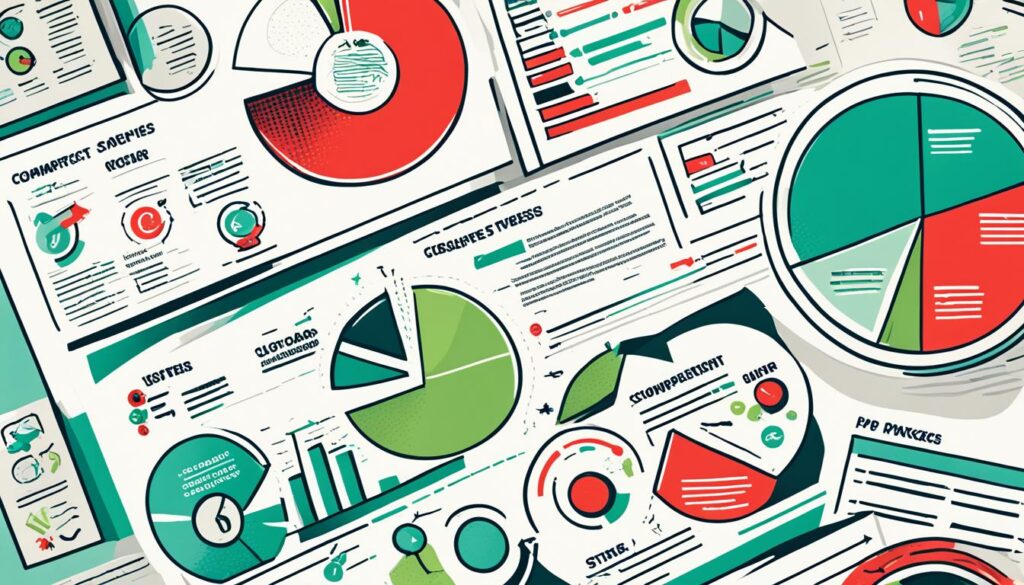
“Competitive analysis is the cornerstone of a successful product strategy. It allows you to understand your market, identify your strengths and weaknesses, and develop a plan to outperform the competition.” – Jane Doe, Product Strategist
Determine Why Users Choose Your Product
Understanding customer choices is crucial for business success. Analyzing motivations reveals your product’s unique value and selling points. This helps differentiate your offering from competitors.
A Harvard Business Review study shows the importance of customer insights. Companies with strong market research metrics grow faster. They also deliver higher returns to shareholders over time.
Several factors influence purchasing decisions. Some consumers prefer products based on price. Others prioritize performance attributes like reliability or functionality.
Emotional and social factors can differentiate your product. Local businesses can stand out by supporting their community. Customers may choose based on both objective and subjective factors.
Customer feedback provides valuable insights into user motivations. This information helps refine your product value proposition. It also highlights unique selling points to attract and retain customers.

“A great value proposition focuses on how customers define value rather than just highlighting differences from competitors.” – Peter Thomson, Harvard Business School
Understanding customer preferences helps communicate product benefits effectively. It allows you to create a compelling customer experience. This sets you apart in the market.
Estimate the Problem Frequency
Knowing how often your product solves a problem is key to defining its use case. This helps understand your audience’s needs and product usage. It also aids in estimating the product’s value and setting the right price.
Surveys and interviews with target customers can reveal problem frequency. Analyzing past product usage data can also provide valuable insights. These methods help gather information about customer challenges and their occurrence.
When assessing problem frequency, consider factors such as:
- Recall difficulty: Behavioral questions can be challenging due to the difficulty in accurately recalling exact values and variations in frequency.
- Reference periods: Clearly defining the reference period, such as “in the past 12 months” or “in a typical week,” can improve response accuracy.
- Quantification: Utilizing numerical ranges, approximate ranges, or vague quantifiers in closed-ended responses can help measure frequency more accurately.
Understanding problem frequency helps align your product with customer needs. It informs feature development, pricing, and marketing strategies. This knowledge can also guide product planning and boost customer lifetime value.

“Precise reference periods like ‘past 12 months’ are preferable to ambiguous terms like ‘past year.'”
Estimating problem frequency is crucial for your product’s success. It shapes your product’s use case and ensures its market longevity.
The Importance of Product Development Planning
Effective product development needs a detailed plan with milestones and checkpoints. A product development plan aligns the team and creates checkpoints. It eliminates risk, contains success metrics, and allows for more creativity.
This crucial step in the new product development process ensures thorough planning. It increases your chances of success by leaving no stone unturned.
Why a Product Development Plan is Important
A well-structured product development plan offers several key benefits:
- Aligns the team by providing a clear roadmap and shared understanding of goals
- Creates checkpoints to monitor progress and identify potential issues early on
- Eliminates risk by thoroughly vetting the product concept and development process
- Includes success metrics to measure the product’s performance and impact
- Fosters creativity by establishing a framework for ideation and experimentation
Investing time in product development planning is vital for successful product launches. It ensures a comprehensive strategy is in place. This minimizes costly mistakes and missed opportunities.
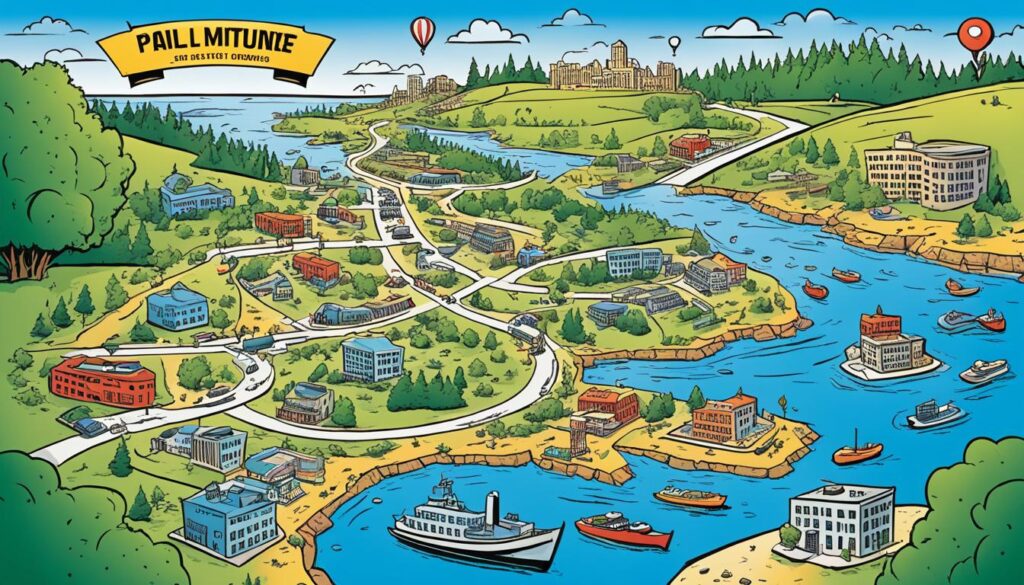
Creating a detailed product roadmap helps align your team and identify key milestones. This strategic approach keeps you focused on important priorities. It can make a big difference in bringing your vision to life.
A well-planned product development strategy helps meet evolving customer needs. It sets the foundation for long-term success and growth.
The New Product Development Process
Creating a new product requires careful planning and execution. The process involves seven key stages. These stages help bring your product idea to market successfully.
By following this framework, you can address all necessary steps. This approach increases your chances of success in the market.
- Idea Generation: This stage focuses on understanding the target market and its pain points. The SCAMPER model can help generate new product ideas. It stands for Substitute, Combine, Adapt, Modify, Put to another use, Eliminate, Reverse/rearrange.
- Market Research: Assess industry sentiment, demand, and competitor analysis. Collect feedback from customers through surveys and tools like Lucky Orange. This helps incorporate unique features that meet customer needs better.
- Planning: Establish marketing and pricing strategies. Align the product idea with overall goals. Consider market trends to ensure the product fits in well.
- Prototyping: Create a minimum viable product to test functionality. Identify areas for improvement before mass production. Gather feedback from target audiences during this stage.
- Sourcing Materials and Production Partners: Find reliable suppliers and production partners. This ensures the final product meets quality standards and is delivered on time.
- Determining Costs: Calculate costs for product development, manufacturing, and marketing. This is essential for establishing a viable pricing strategy.
- Launching the Product: Introduce the product to the market through targeted marketing strategies. Attract customers and create awareness. Revisit products post-launch to make improvements based on feedback.
This seven-stage process helps meet the needs of your target audience. It increases your product’s chances of success in the market.
| Stage | Description |
|---|---|
| Idea Generation | Understand target market and pain points, use techniques like SCAMPER to generate innovative ideas |
| Market Research | Assess industry sentiment, demand, and competitors, collect customer feedback through surveys |
| Planning | Establish marketing and pricing strategies, align with overall goals, consider market trends |
| Prototyping | Create minimum viable product, test functionality, gather feedback from target audience |
| Sourcing Materials and Production Partners | Secure reliable suppliers and production partners to ensure quality and timely delivery |
| Determining Costs | Calculate development, manufacturing, and marketing costs to establish a viable pricing strategy |
| Launching the Product | Introduce the product to the market through targeted marketing, make post-launch improvements |
This comprehensive approach helps your new product succeed. It ensures you meet the needs of your target audience effectively.
Generate an Idea
Creating a new product is both thrilling and challenging. The first step is product ideation – generating innovative ideas for unmet market needs. There are effective techniques to uncover promising new product opportunities.
The SCAMPER model is a powerful tool for product ideation. It stands for Substitute, Combine, Adapt, Modify, Put to another use, Eliminate, and Rearrange. This model helps spark creativity and uncover unique new product ideas.
You can apply SCAMPER to existing products or services. Try substituting a key component or combining features from different offerings. You might also adapt a product for a new target audience.
Insights from thorough business analysis can inspire innovative product ideation. Examine industry trends, customer pain points, and competitive landscapes. This helps identify market gaps your new product can fill.
A successful new product often starts with a spark of inspiration. Combine creative techniques with data-driven insights to unlock promising new product ideas. This approach sets your venture on the path to success.

“The best ideas come from iterating on existing products, not starting from scratch.” – Steve Jobs
Conduct Market Research
Validating your idea is crucial before investing in product development. Market research provides insights that shape your product’s strategy and positioning. This process involves gathering feedback, analyzing demand, and evaluating competitor offerings.
Understanding the competitive landscape is key to success. Thorough research can help you create a product that truly resonates with your target audience.
Product Validation: Gauge Interest and Refine Your Concept
Validate your product idea through surveys, crowdfunding campaigns, and test marketing. Engage with an unbiased audience to gauge interest and gather feedback. This input can inform your product’s value proposition and guide development efforts.
Competitive Analysis: Understand the Market Landscape
Analyze competitors’ products, pricing, and marketing strategies to identify opportunities. Research how they attract and retain customers to reveal market gaps. This intelligence can inform your product’s features, pricing, and positioning.
Comprehensive market research helps validate your concept and assess demand. It also aids in developing a strategy to outshine competitors. These insights set you up for long-term success in the marketplace.

| Market Research Techniques | Benefits |
|---|---|
| Surveys | Gain direct feedback from potential customers on product features, pricing, and preferences. |
| Focus Groups | Gather in-depth insights through interactive discussions with a targeted audience. |
| Competitor Analysis | Understand the competitive landscape and identify opportunities to differentiate your product. |
| Market Trend Analysis | Identify emerging trends and shift your product development strategy to meet evolving customer needs. |
Develop a Detailed Plan
After validating your idea and researching the market, create a comprehensive product development plan. This strategic document will guide your team through the entire product lifecycle.
Your plan should include a product sketch, a list of materials, and answers to key questions. It should cover pricing, positioning, and marketing strategy.
A well-executed plan keeps your team aligned and helps navigate potential risks. It establishes clear checkpoints throughout the development process.
- Define Your Product Objectives: Outline specific goals for the product, including target market and desired features.
- Develop a Product Roadmap: Create a timeline mapping development stages from ideation to launch.
- Outline the Development Process: Detail steps to bring your product to life, including research and testing.
- Determine Costs and Pricing: Calculate development and manufacturing expenses to set a profitable pricing strategy.
- Define Your Marketing Plan: Outline promotion strategies, including target audience and advertising channels.
A thorough product development plan positions your business for long-term success. It ensures efficient resource allocation and meets target market needs.
This comprehensive blueprint aligns your team and guides your product creation journey.
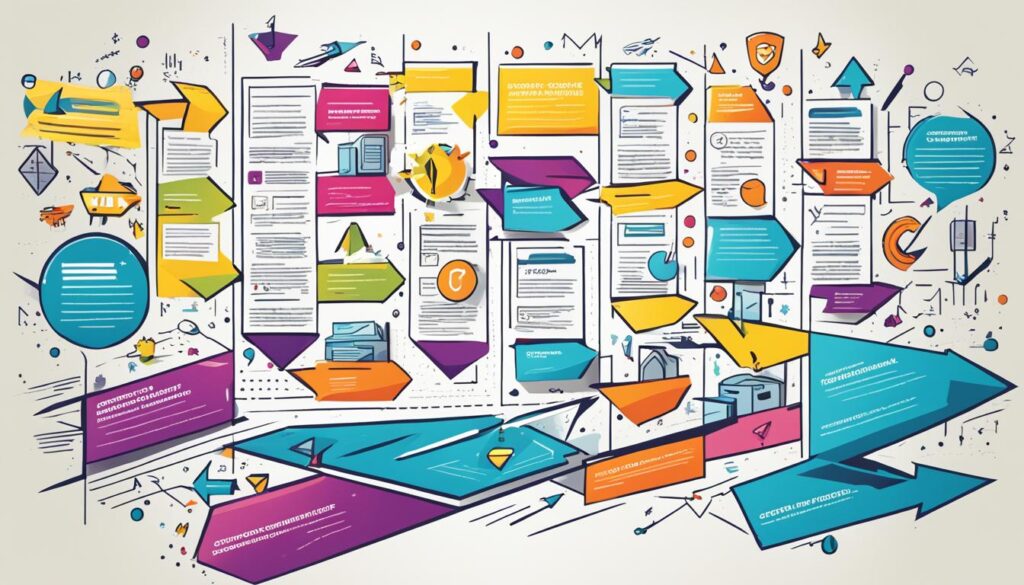
“A well-crafted product development plan is the foundation for bringing your vision to life. It’s the key to navigating the complexities of product creation and ensuring your team stays focused on the right priorities.”
Create Prototypes
Prototyping refines your design and creates a finished sample for mass production. You may prototype yourself or work with third-party providers. Experimenting with several versions is essential in the product development lifecycle.
Gradually improving your prototype helps perfect your product. This process allows you to test and refine your design effectively.
Prototyping Methods: Exploring Different Approaches
Various prototyping methods can bring your product vision to life. These approaches help test and refine your ideas.
- Paper Prototypes: Low-fidelity prototypes that allow you to quickly test and iterate on your product’s user interface and functionality.
- Digital Prototypes: Interactive, high-fidelity prototypes created using tools like Adobe XD, Figma, or InVision, enabling detailed testing and feedback.
- Physical Prototypes: Tangible models that can be tested for functionality, durability, and user experience, often created using 3D modeling and CAD design tools.
The key is to experiment, gather feedback, and refine your design. This process continues until you’re satisfied with the final product.

Consider factors like cost, materials, and manufacturing feasibility during prototyping. Prototyping services or tools like SolidWorks can help create detailed CAD designs.
High-fidelity prototypes accurately represent your product. They allow for thorough testing and evaluation before production.
Prototyping is an essential step in the product development process, allowing you to validate your design, gather feedback, and refine your product until it’s ready for mass production.
The prototyping phase is an iterative process. Test, evaluate, and improve your design based on real user feedback.
Investing time in strong prototypes increases your chances of success. It helps develop a market-ready product that meets customer needs.
Source Materials and Production Partners
Sourcing materials and finding reliable production partners are vital for product development. These steps require careful research, negotiations, and planning to ensure quality and timely delivery.
Product sourcing offers several options to consider. Manufacturers, wholesalers, artisans, and other businesses can be potential suppliers. Each choice has pros and cons, so thorough research is necessary.
Manufacturers can save money, especially for custom items. However, they often require large bulk orders. Wholesalers are good for established products, offering decent prices for larger quantities.
Artisans provide a crafted feel but may struggle with high demand. Dropshipping is hassle-free, but you have less control over the process.
- Manufacturers: Sourcing directly from manufacturers can save you money, especially for custom-made items. However, this often requires placing large bulk orders to meet their minimum order requirements.
- Wholesalers: In the ecommerce industry, wholesalers can be a good option for established products, offering decent prices for larger order quantities.
- Artisans: DIY product creation can provide a crafted, artisan-made feel, but may face challenges in meeting demand.
- Dropshipping: This hassle-free sourcing option allows the vendor to handle everything post-sale, but you may have less control over the process.
When choosing manufacturing partners, look at their industry standards compliance and timelines. Consider order scale, pricing, and payment terms. Seek recommendations and attend trade shows to find potential partners.
Effective supply chain management and production planning ensure smooth manufacturing. Create detailed product specs and maintain clear communication with partners. Use inventory tracking systems to optimize operations.
“Careful planning and selection of reliable production partners is crucial for ensuring the quality and timely delivery of your product.”

Navigating product sourcing and manufacturing carefully builds a strong business foundation. With the right materials and partners, you’ll be ready to bring your product to market.
Determine Costs and Pricing Strategy
Product costing and pricing strategy are vital in product development. Consider material costs, labor, overhead, and desired profit margins when setting prices. A cost-benefit analysis helps optimize pricing for long-term success.
Several pricing strategies exist, each with pros and cons. These include:
- Skimming pricing: Setting new product prices high and subsequently lowering them over time.
- Competitive pricing: Aligning your prices with those of your competitors.
- Dynamic pricing: Adjusting prices based on market conditions and customer demand.
- Value-based pricing: Pricing based on the perceived value of your product to customers.
- Penetration pricing: Offering low prices to gain market share, then raising them later.
Consider your target market, product value, and competition when choosing a pricing strategy. Customer feedback and live pricing tests can help refine your approach.
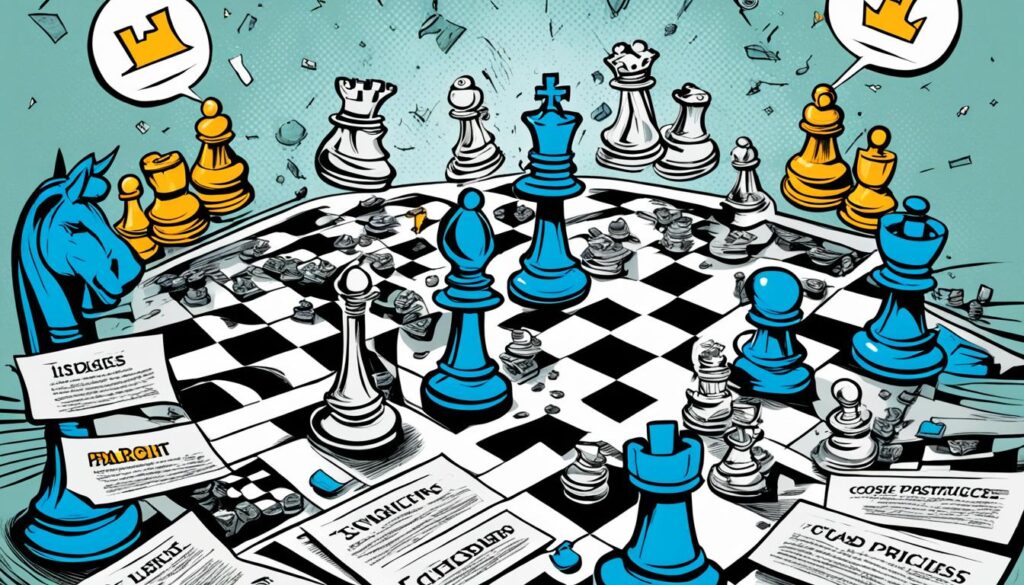
Balancing product costing, pricing strategy, and profit margins is key to product success. Analyze costs and develop a pricing strategy that appeals to your market.
Define Your Products and Services
Defining your products and services is key to establishing your business offerings. Products are tangible items that can be made and sold. Services are intangible and come from individual efforts.
Consumer products are for personal use, like food, clothing, and electronics. Business products are for organizations’ operations or resale. These include machinery, software, and raw materials.
Consumer products have different types based on buying behavior. Convenience products are bought often with little effort. Shopping products need more research before purchase.
Specialty products have unique features and feel exclusive. Unsought products aren’t actively sought until needed, like insurance policies.
| Product Type | Description | Examples |
|---|---|---|
| Convenience Products | Purchased frequently and with little planning effort | Food, household items, personal care products |
| Shopping Products | Bought less often, involving comparison of attributes | Clothing, electronics, furniture |
| Specialty Products | Target specific customer groups, have unique characteristics | Luxury goods, high-end audio equipment |
| Unsought Products | Lack customer awareness until a need arises | Insurance policies, funeral services |
Business products include raw materials, equipment, supplies, services, and software. A major subcategory is business software (SaaS), like accounting and customer relationship management apps.
B2B customers have specific preferences. They want to try products before buying and value customer reviews. They also appreciate return policies and personalized sales approaches.
Clear product definitions help communicate value to customers. This allows you to stand out from competitors in the market.
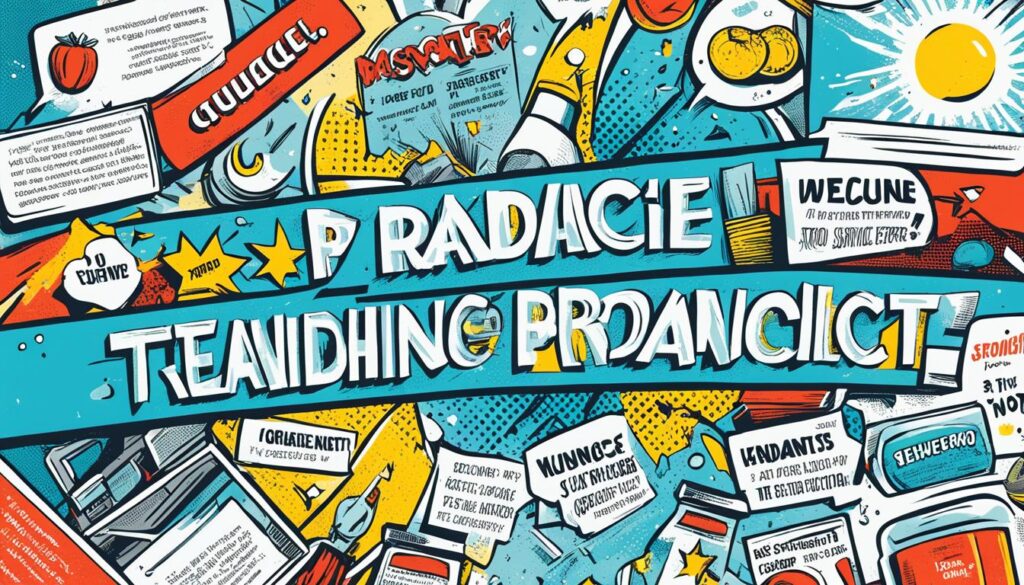
Tangibility: Products vs Services
Tangibility sets products and services apart. Tangible products are countable, touchable, and visible. Services are intangible and harder to assess before use.
This difference shapes how customers view quality. Physical attributes make product quality easier to judge. Services require experience to evaluate properly.
Car buying lets customers inspect and test before purchasing. Home repair quality depends on the technician’s skill and service delivery.
| Tangible Products | Intangible Services |
|---|---|
| Countable, touchable, and visible | Challenging to assess before consumption |
| Easier to evaluate product quality | Harder to evaluate service quality |
| Can be stored and maintained as inventory | Cannot be stored, perishable in nature |
| Can be returned or replaced if unsatisfactory | Cannot be returned once rendered |
Product quality assessment is simpler due to tangibility. Service quality assessment often needs firsthand experience. This difference affects how businesses market their offerings.
“The key distinction between products and services lies in their tangibility. While tangible products can be easily evaluated, intangible services pose more challenges for customers in assessing quality before consumption.”
Businesses must grasp these differences to market effectively. Understanding tangibility helps improve customer satisfaction for both products and services.

Conclusion
Defining your products and services is vital for business success. It’s a key step in product development. By understanding customer needs and market trends, you can create offerings that truly stand out.
A customer-centric approach is essential for long-term growth. It helps craft compelling value propositions and optimize marketing strategies. This approach positions your business for continued success and profitability.
Success comes from evolving your products to stay competitive. Keep gathering customer feedback and adapting your offerings. This ensures your business stays relevant in today’s dynamic marketplace.









